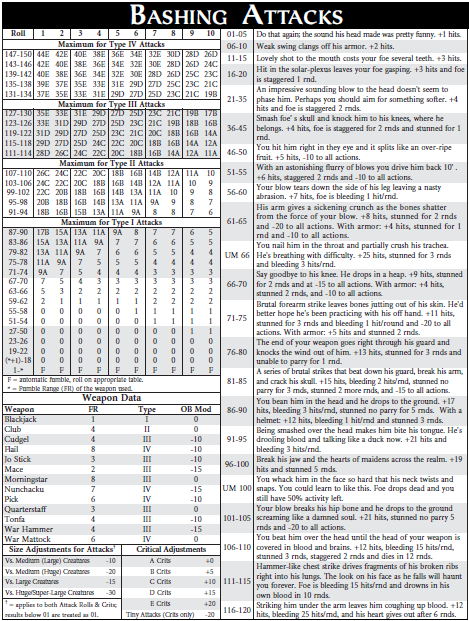Brian: Hands down it’s the size rules (which may be changed or modified). Such a useful tool for scaling deadliness of a creature, spell, object or trap within the rule frame. I understand that many people didn’t like the math, but it really is fantastic.
Peter: This was a hard choice and I am wavering between two possibles. I love the experience rules. I first saw them in HARP and I am really pleased to see them being used as the default rules in RMU. I was using the HARP rules, house ruled into my RMC game but now I am using the RMU rules in their place. My other love is Spell Law, pretty much all of it from the completed spell lists to the use of the spell aquisition skill as spell mastery.
Interestingly Brian and I are on different sides of the RMU size rules argument. I found the rules cumbersome, awkward and terminally slow. They initally really applied mostly to Arms Law and I though I could just junk all of Arms Law and rewrite my existing combat tables to fit RMU, which I probably will do anyway. That was before I saw Creature Law and the normalised creatures. It is a tribute to RMU and all flavours of Rolemaster that it is so modular that something as central as these rules can be changed without breaking the system.


 http://www.ebay.com/itm/1976-vintage-Matchbox-Mobile-Action-Command-RESCUE-CENTER-playset-Lesney-MAC-/381878473020
http://www.ebay.com/itm/1976-vintage-Matchbox-Mobile-Action-Command-RESCUE-CENTER-playset-Lesney-MAC-/381878473020
